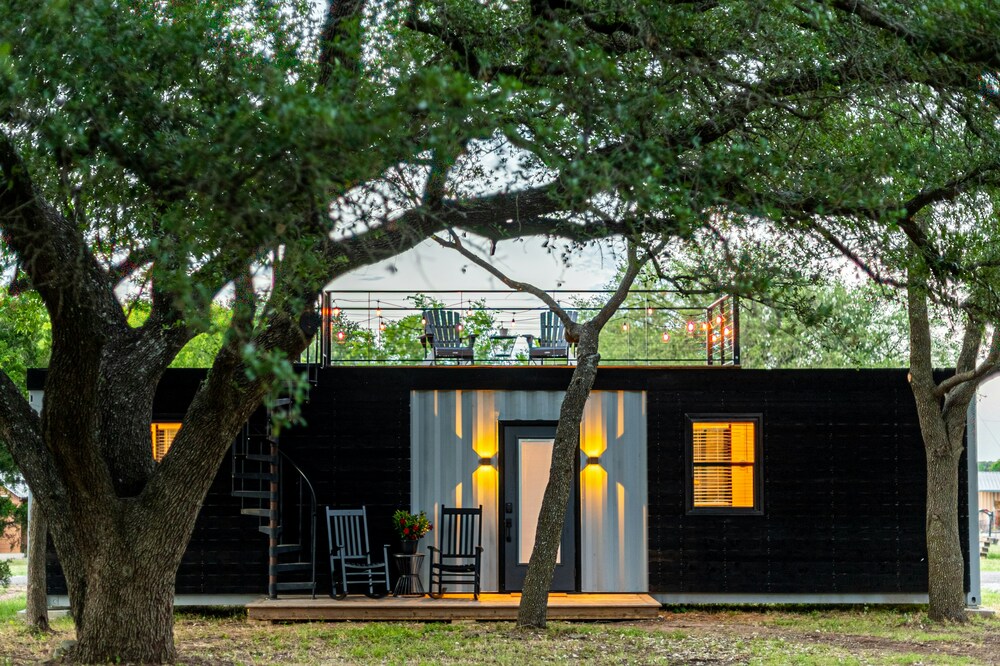Nestled at the southern foot of Suzhou’s iconic Shishan (Lion) Mountain, and gently embraced by urban life and natural scenery, the Banyan Tree and Angsana Suzhou Shishan resort complex reinterprets traditional Chinese spatial ideals for a contemporary context. Designed by GOA (Group of Architects), this project sits within Shishan Park, surrounded by water to the south, rising terrain to the north, and a patchwork of city infrastructure. The site’s location—within a public park yet adjacent to dense urban development—demanded a careful balancing act between visibility, serenity, tradition, and modernity.

Topographic Tactics and Architectural Grounding
Rather than shielding the resort from its context through enclosure, the architects devised a more nuanced response: lifting the entire development onto a raised platform. This elevated plinth performs both spatial and symbolic roles—it separates the resort’s internal world from the bustling park, and simultaneously becomes part of the landform itself. Below this platform lie the public programs: banquet halls, gyms, and back-of-house functions. Above it, a constellation of low-rise volumes unfolds—a collection of buildings gently stepping with the landscape, blending built form and terrain.
Limiting building height to 12 meters and employing pitched roof structures reminiscent of Jiangnan’s residential vernacular, GOA constructs a contemporary silhouette that feels familiar yet refreshingly restrained. These buildings—home to the Banyan Tree and Angsana hotel lobbies, restaurants, and guest rooms—are distributed horizontally in elongated volumes that follow the east-west orientation of the site. Their alignment is neither rigid nor arbitrary, instead echoing the natural contours of the lake and mountain ridges, creating a spatial rhythm that draws guests through open and closed moments.
A central axis, aligned directly with Shishan Mountain, carves a ceremonial procession through the complex. Along this vista, major public spaces unfold—main entrances, the reception pavilion, and key dining areas—all opening out to dramatic views of the mountain and the broader park beyond. This strong axial experience is counterbalanced by meandering paths, soft landscape pockets, and quiet courtyards, delivering a journey that is both choreographed and spontaneous.

“Structure Within a Garden” / “Garden Within a Structure”
Suzhou is a city defined by its gardens. In the historic districts, courtyards emerge as intimate green pockets within dense urban grids. At Banyan Tree and Angsana Suzhou Shishan, this classical idea is turned inside out. The resort exists as a “structure within a garden” at the park scale, but within its own walls, landscape infiltrates every corner, transforming the development into a mosaic of “gardens within the structure.”
These gardens are not afterthoughts; they are fundamental design elements that shape movement, frame views, and define thresholds. From the large open plazas near the lobby to the secluded green enclosures beside private villas, the landscape becomes an essential architectural material. The buildings themselves serve as frames, curating a series of picturesque scenes—borrowed views of the mountain, glimpses of water, or tightly controlled vistas of inner courtyards.
At a formal level, GOA sculpts the terrain into a series of terraces and depressions. These topographic manipulations create a series of “valley gardens” and “terrace gardens,” imbuing the site with a poetic geography. Buildings gently perch atop these elevations or nestle into the contours, allowing the experience of the resort to shift with every step. Spaces transition smoothly from public to private, from monumental to intimate, in a seamless dialogue between earth, architecture, and vegetation.

Material Language and Contemporary Vernacular
A key part of the design’s success lies in its subtle material palette, which fuses cultural symbolism with modern performance. Wood-grain aluminum panels evoke the tactile warmth of traditional timber buildings, while offering durability and precision for contemporary applications. Latticed screens and terracotta walls filter light and views, recalling the poetic restraint of classical garden design—“to screen the vulgar and capture the refined,” as stated in The Craft of Gardens. These semi-transparent façades allow nature to appear as fleeting glimpses—never fully revealed, never completely obscured.
The buildings’ lower sections are clad in stone-textured materials that draw from local masonry traditions. This base conveys a sense of weight and permanence, anchoring the lightness of the upper volumes. At dusk, the interplay of materials becomes theatrical—the façade glows like a lantern, shadows dancing behind lattice screens, and the structure dissolves into a softly illuminated silhouette.
This restrained yet expressive material approach reflects the Song Dynasty ideals captured in artworks like Liu Songnian’s Four Seasons of Landscapes, where architecture serves as a lens for contemplating nature. In the same spirit, the resort is designed not to dominate the landscape, but to frame it—offering guests a tranquil interface between body, mind, and world.

Cultural Heritage Reimagined for Contemporary Hospitality
Banyan Tree and Angsana Suzhou Shishan is more than a hotel—it is a spatial essay on Suzhou’s architectural and landscape philosophies, reimagined for the 21st century. Through careful siting, sensitive massing, garden integration, and material translation, GOA delivers a resort that is both rooted and forward-looking.
Each stay becomes a journey—across terraces and valleys, through filtered courtyards, past shimmering water and layered vegetation. The guest becomes part of a landscape painting in motion: distant mountains visible through a screen, light falling on weathered stone, silence broken only by breeze and birdsong.
This project exemplifies a new kind of urban-natural harmony, one where the boundaries between architecture, nature, and memory dissolve, and where the ancient aspirations of beauty, balance, and contemplation find a compelling modern voice.
Photography: In Between & Chen Xi Studio
- Angsana Suzhou Shishan
- Architecture as Landscape
- Architecture Framing Nature
- Banyan Tree Suzhou Shishan
- Chinese Courtyard Design
- Contemporary Vernacular Architecture
- Garden-Inspired Architecture
- GOA Architects
- Landscape-Integrated Resort
- Lattice Window Design
- Low-Rise Hotel Design
- Modern Suzhou Courtyard
- Raised Platform Architecture
- Scenographic Spatial Composition
- Shishan Mountain Retreat
- Suzhou Garden Architecture
- Suzhou Hospitality Design
- Urban Resort Design
- Water Feature Architecture
- Wood-Grain Aluminum Cladding
























































Leave a comment